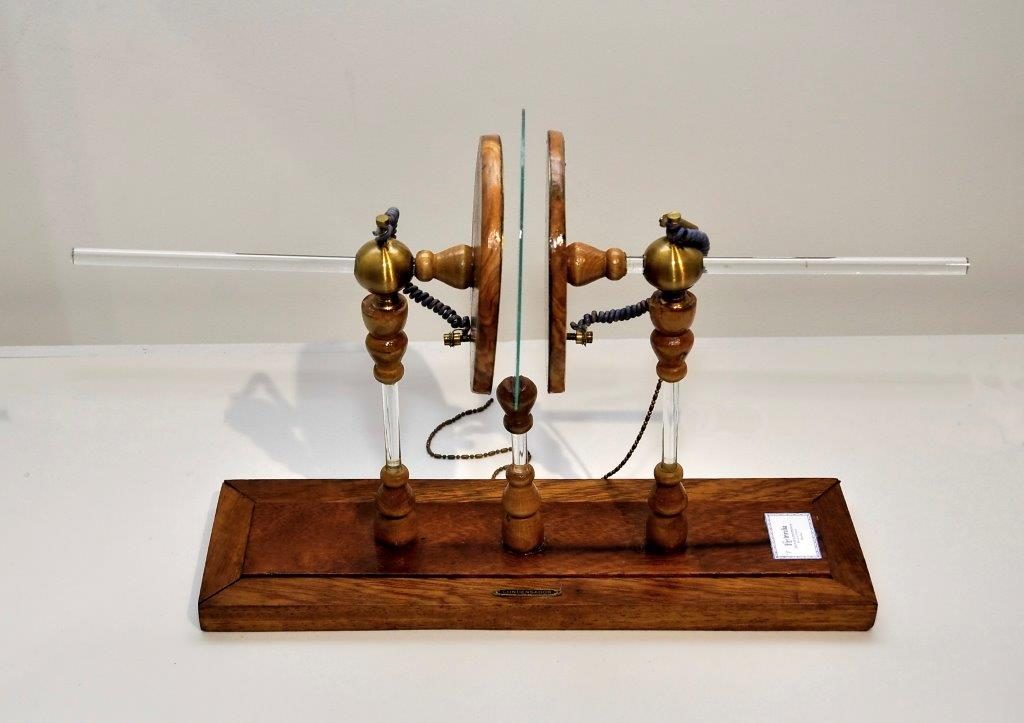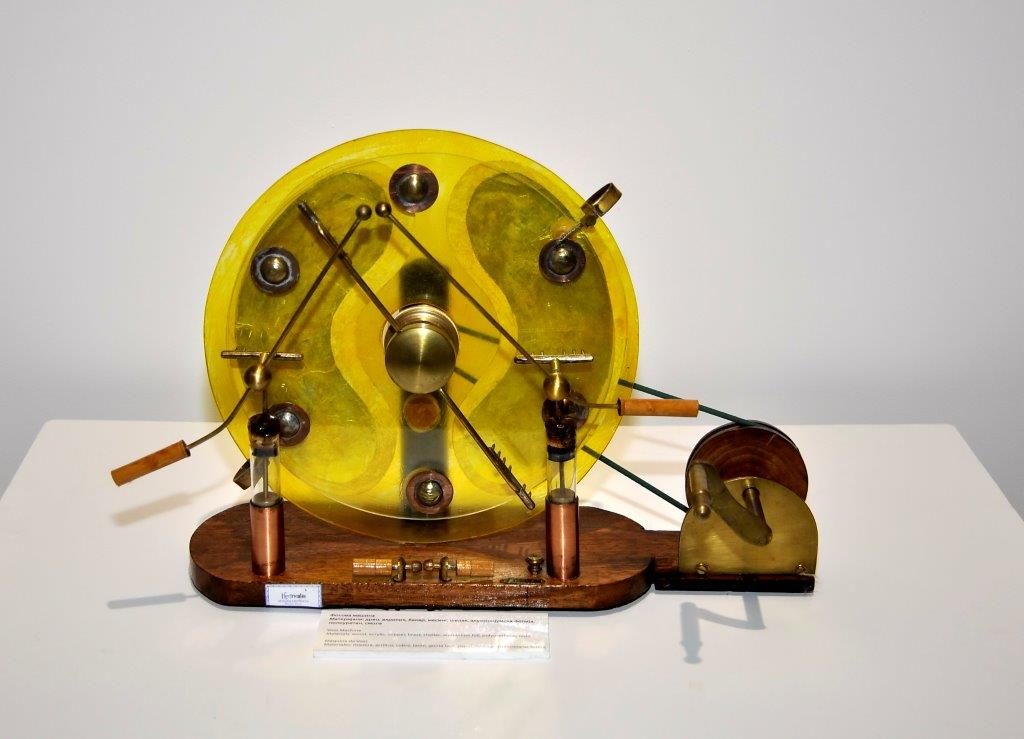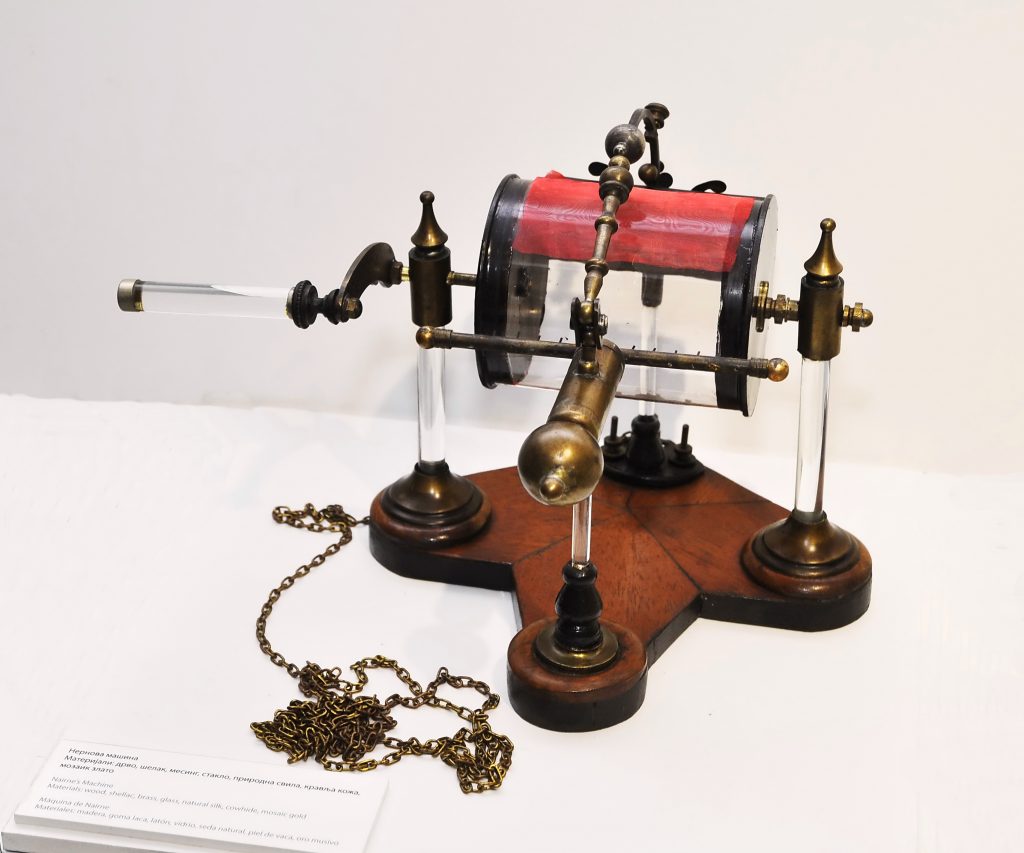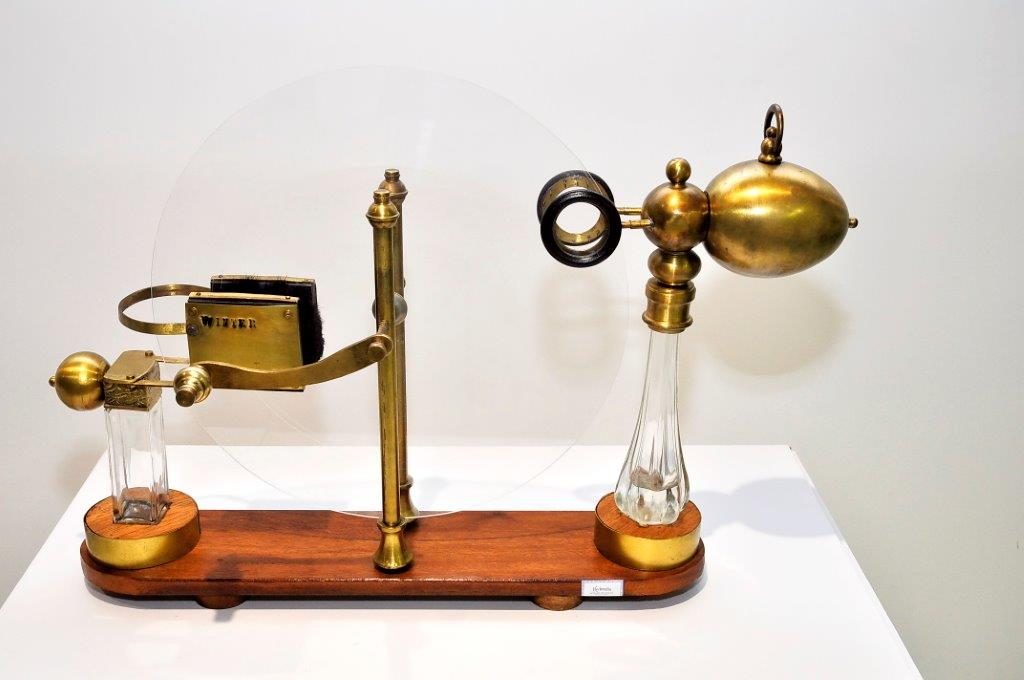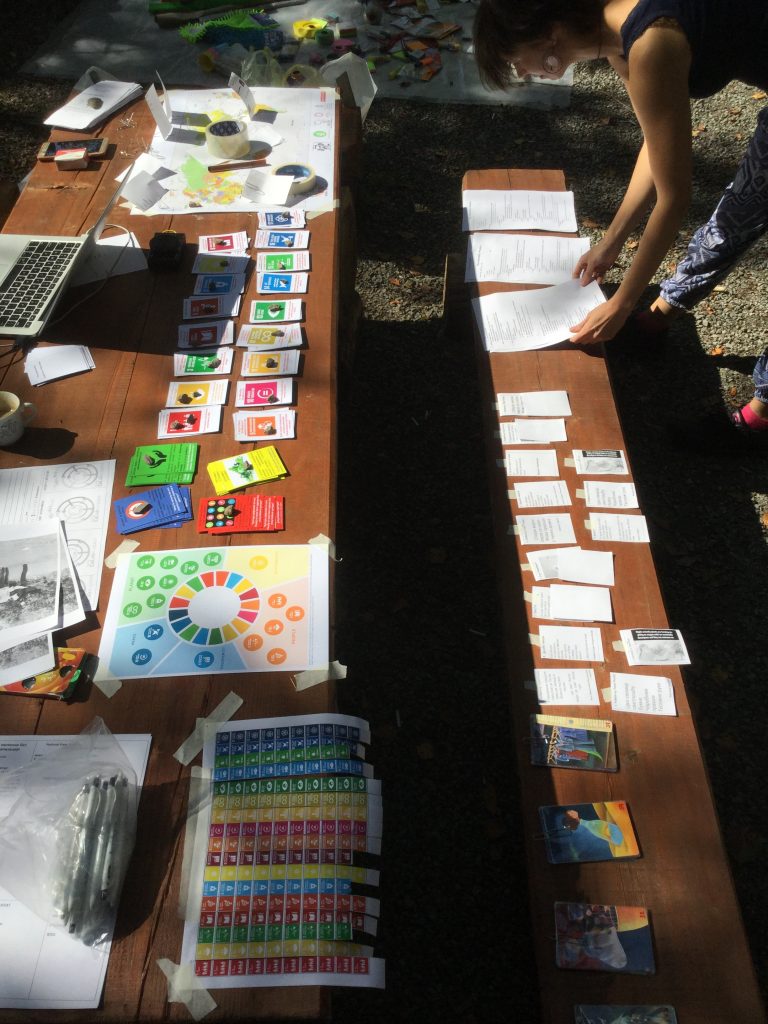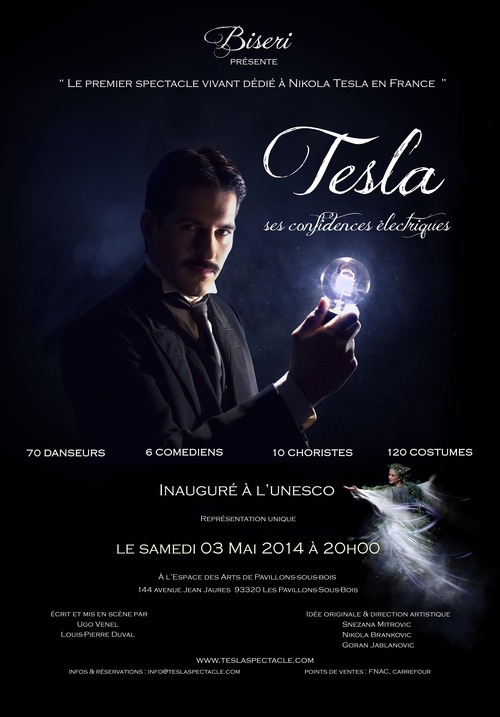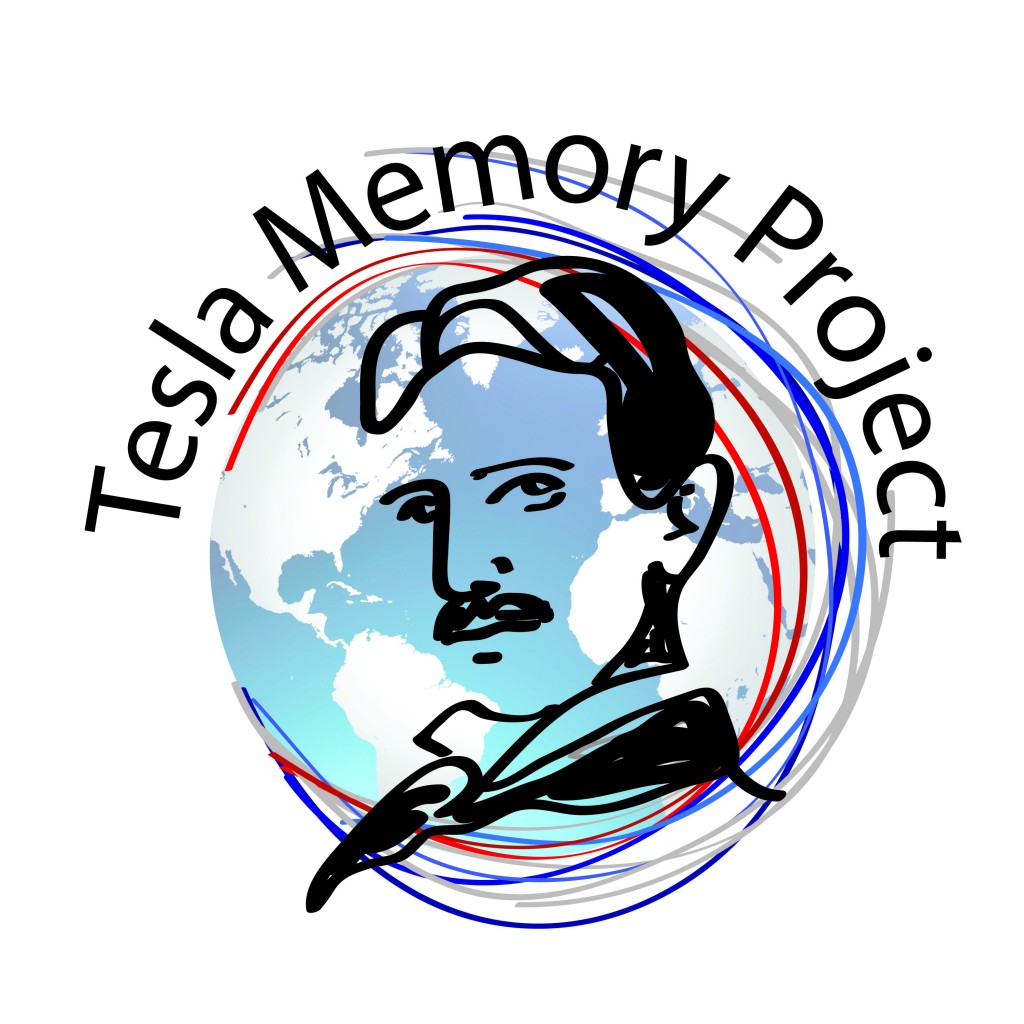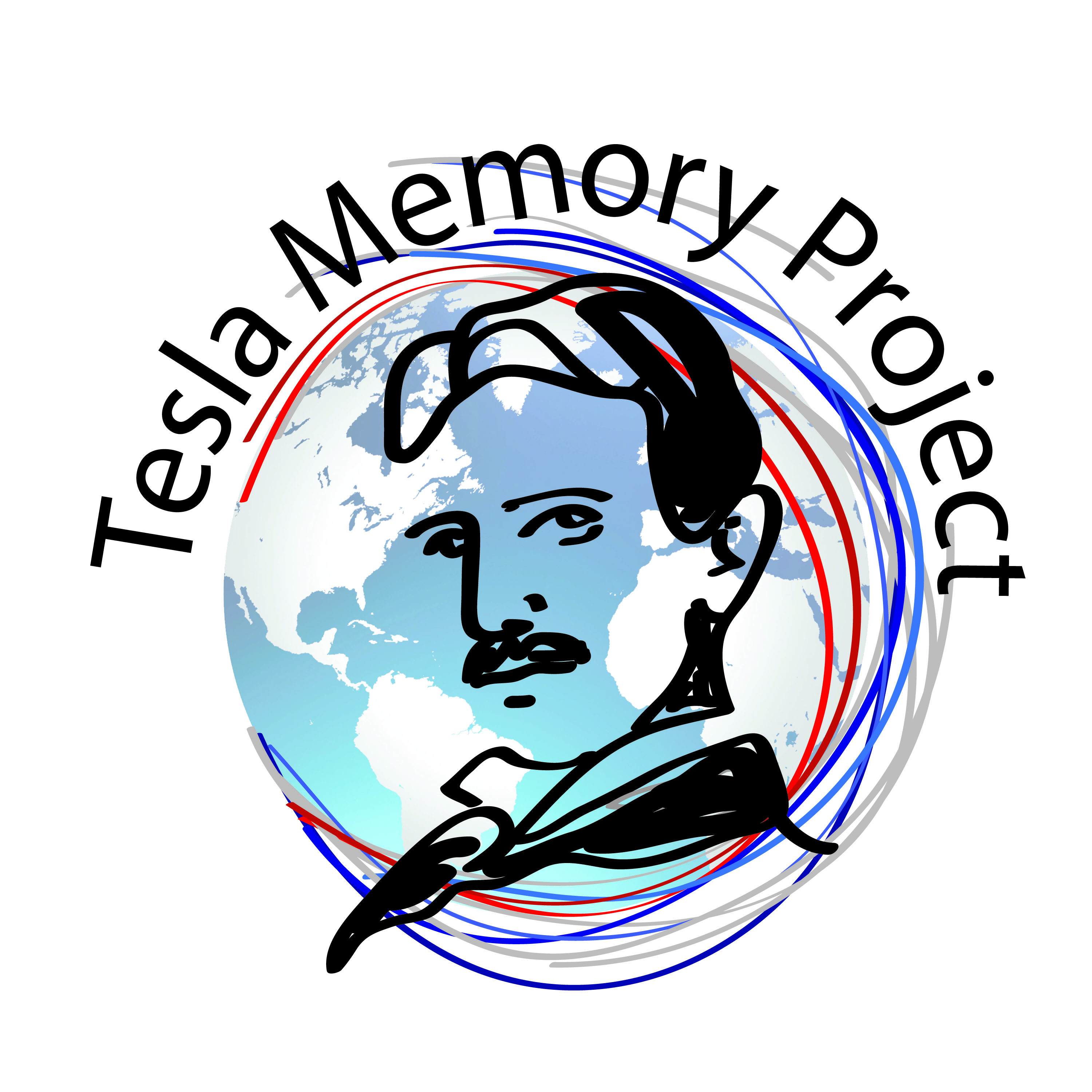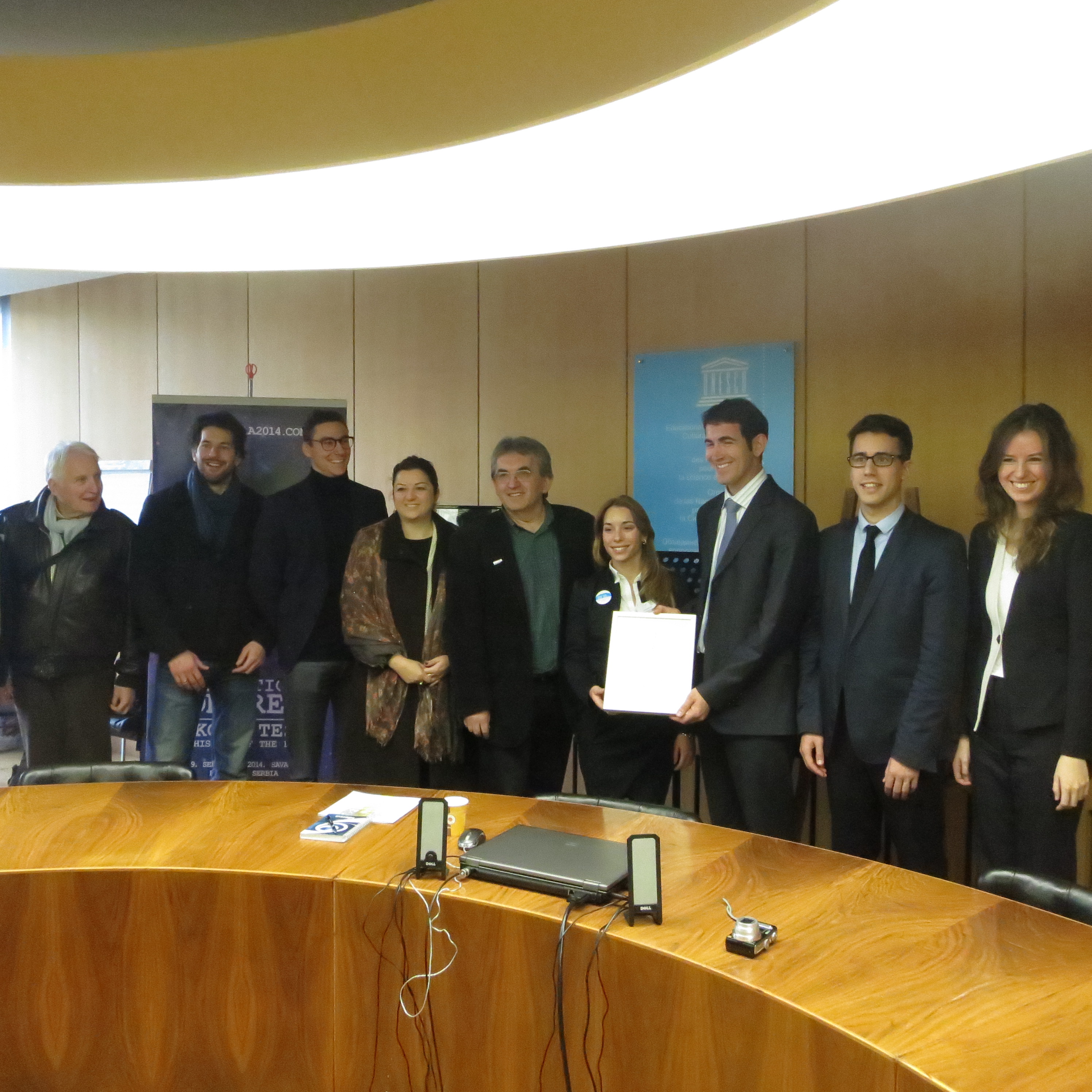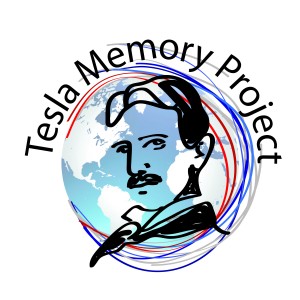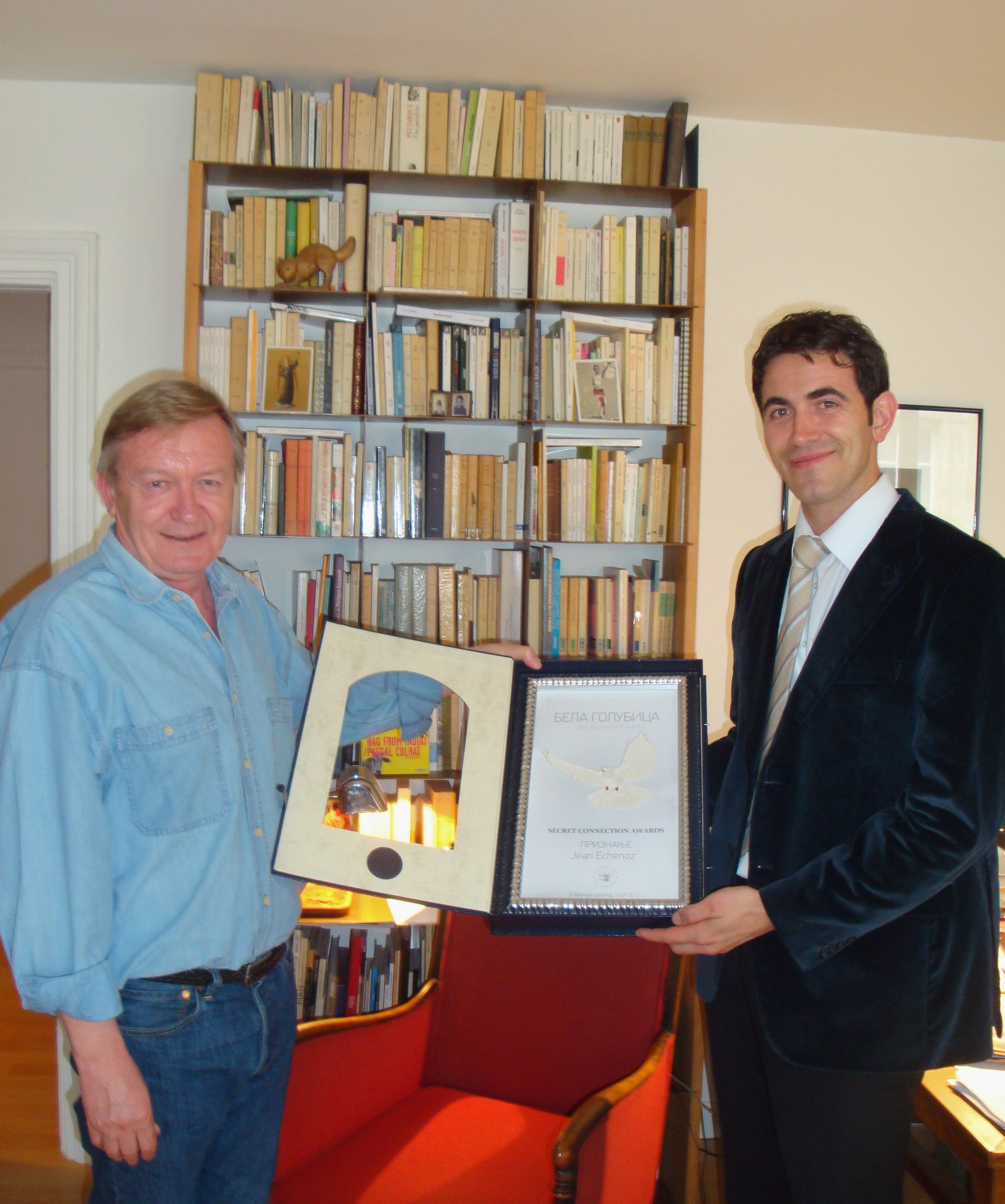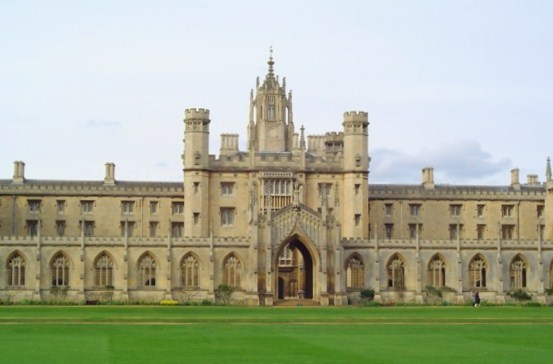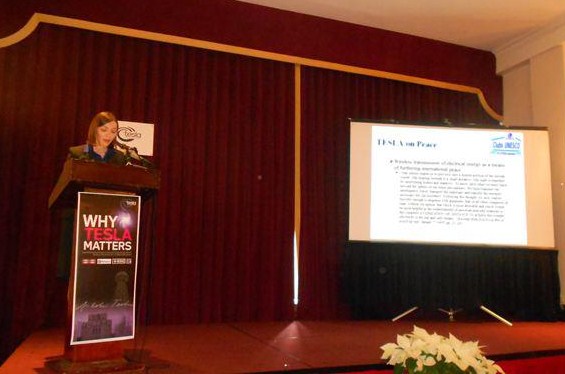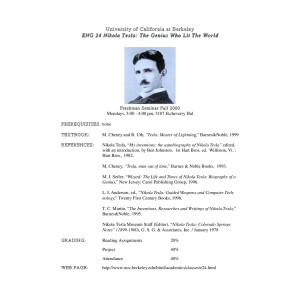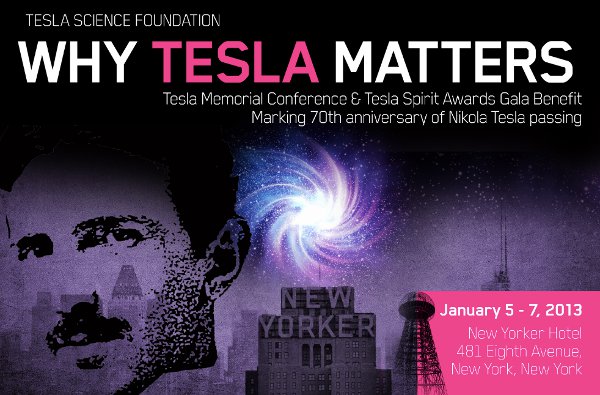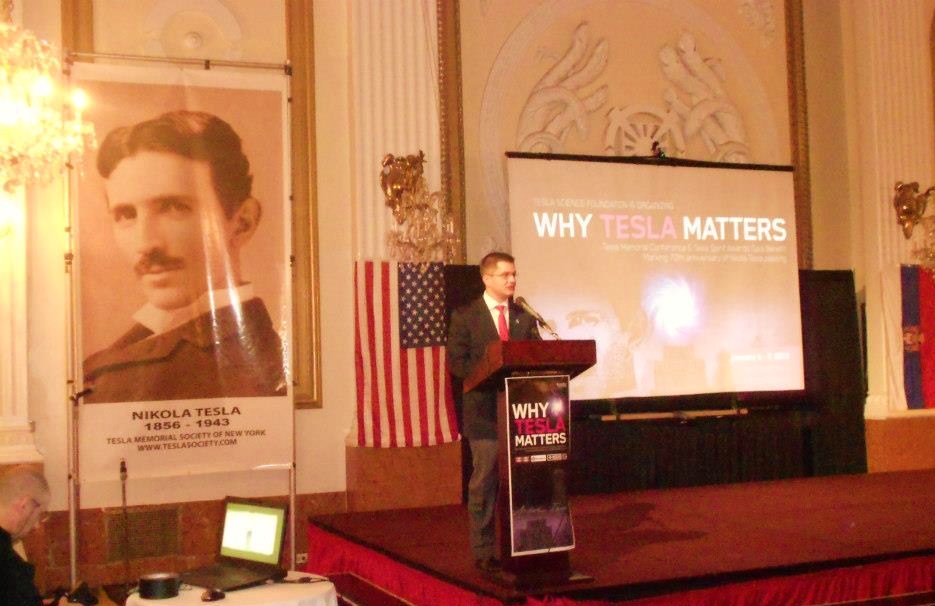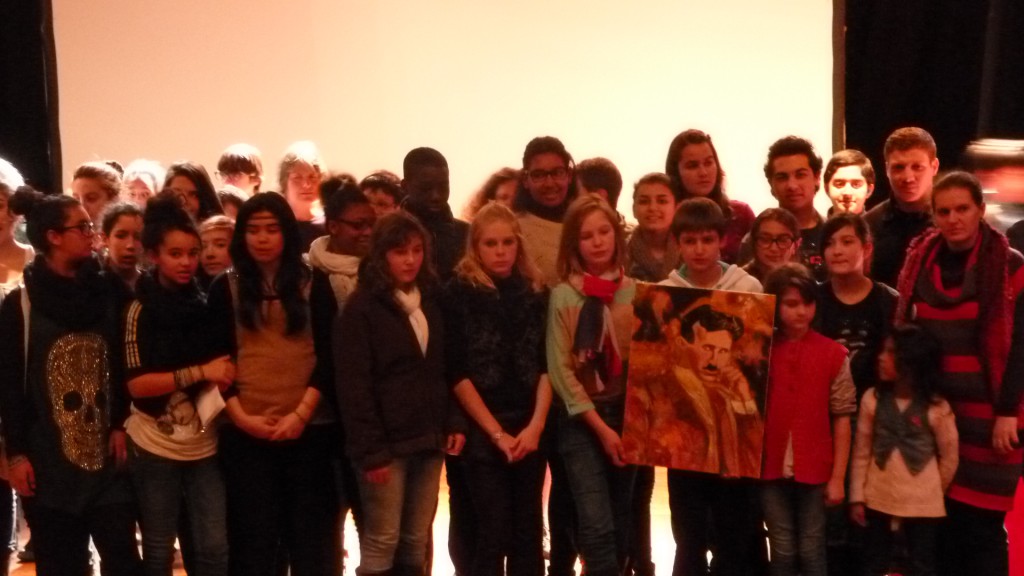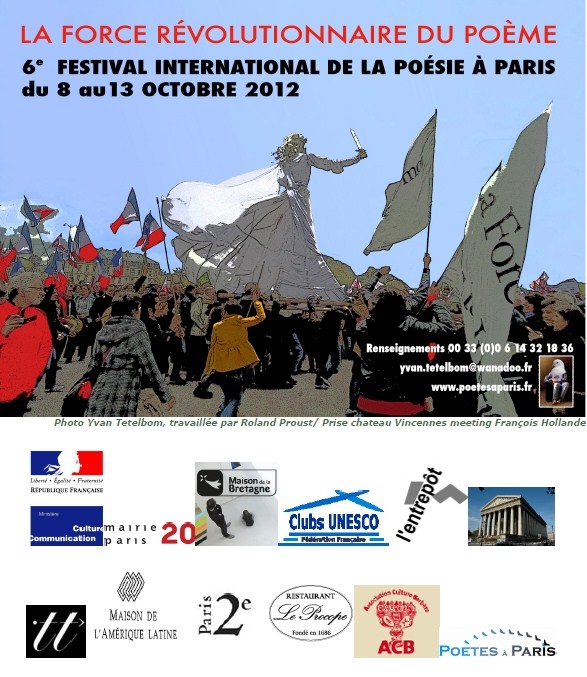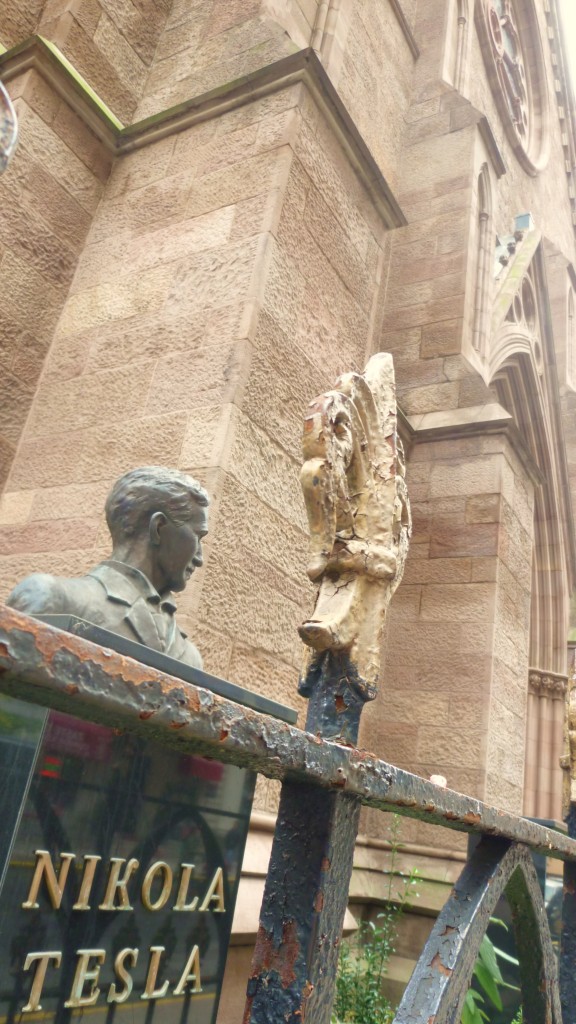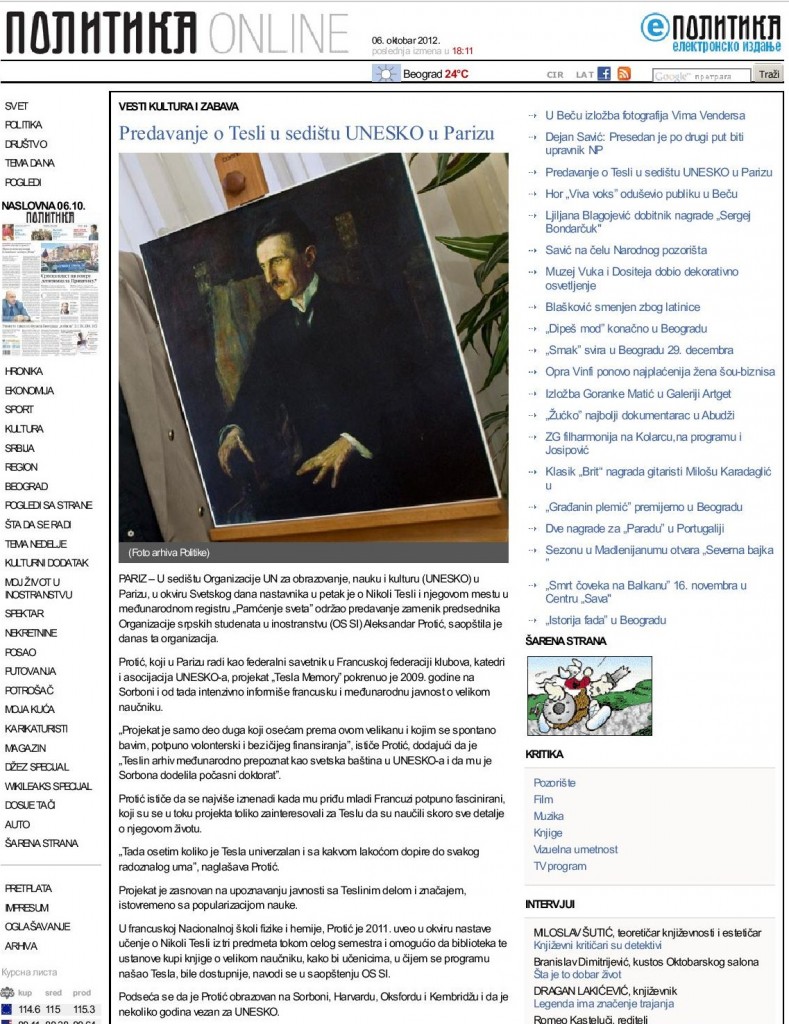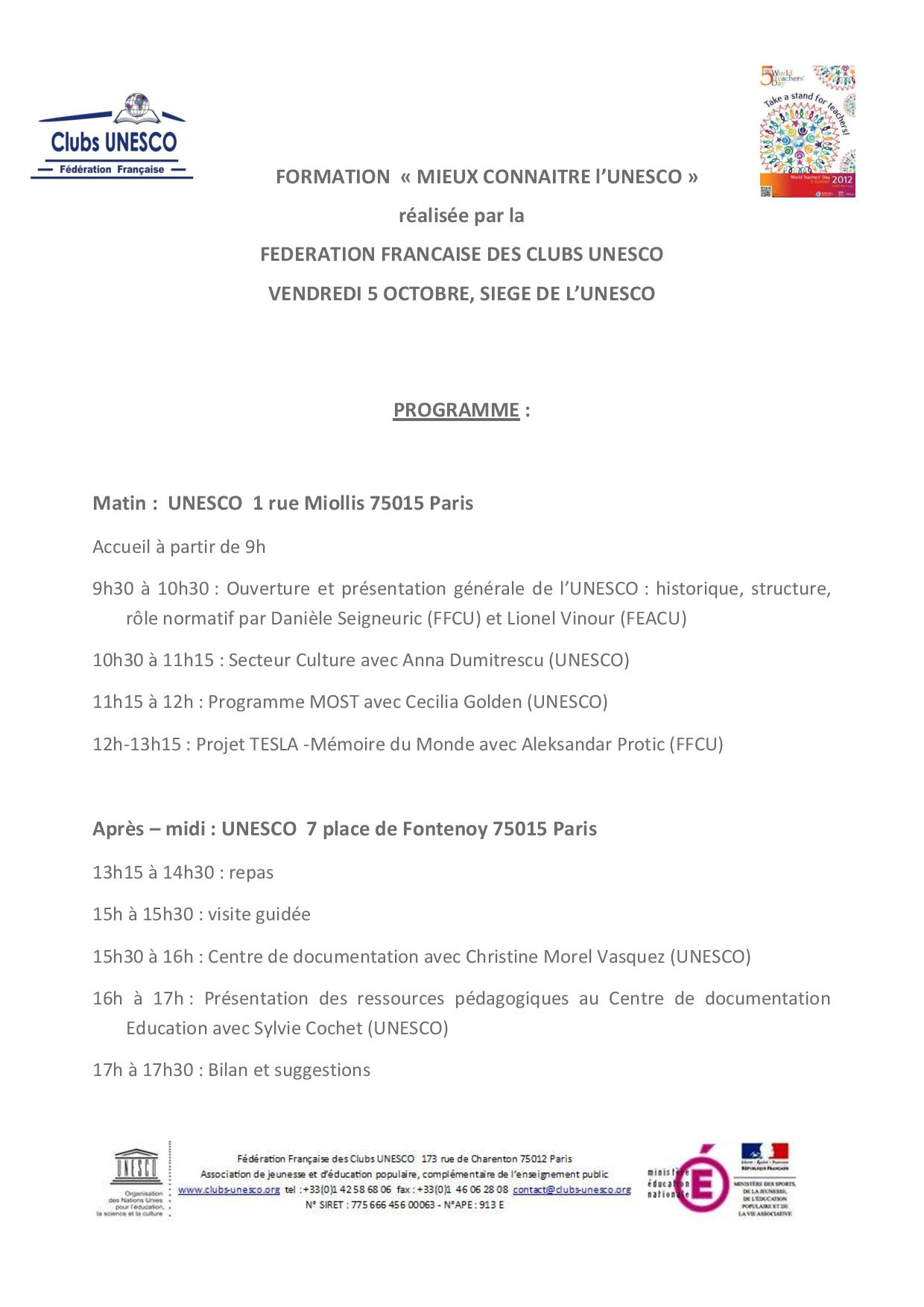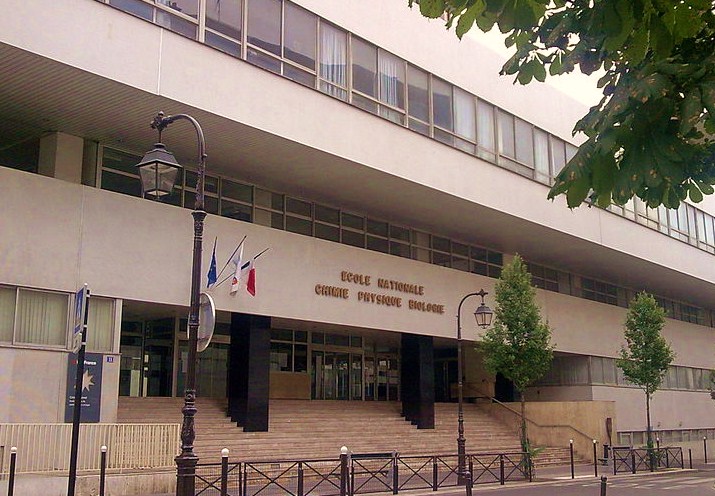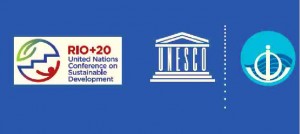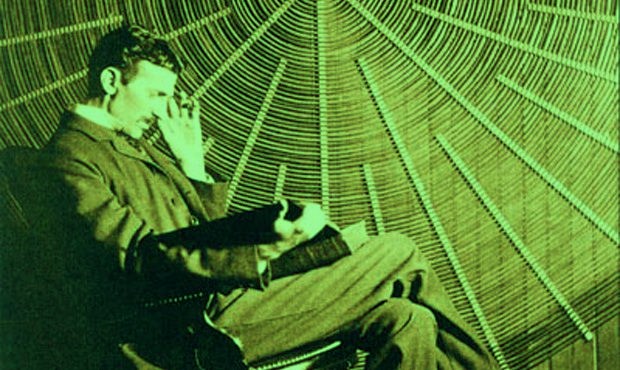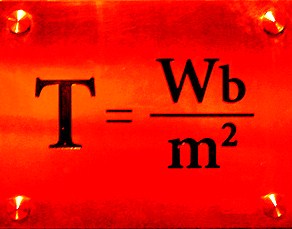PHENOMENA OF ALTERNATING CURRENTS OF VERY HIGH FREQUENCY
by Nikola Tesla
« Electrical journals are getting to be more and more interesting. New facts are observed and new problems spring up daily which command the attention of engineers. In the last few numbers of the English journals, principally in the Electrician there have been several new matters brought up which have attracted more than usual attention. The address of Professor Crookes has revived the interest in his beautiful and skillfully performed experiments, the effect observed on the Ferranti mains has elicited the expressions of opinion of some of the leading English electricians, and Mr. Swinburne has brought out some interesting points in connection with condensers and dynamo excitation.
The writer’s own experiences have induced him to venture a few remarks in regard to these and other matters, hoping that they will afford some useful information or suggestion to the reader.
Among his many experiments Professor Crookes shows some performed with tubes devoid of internal electrodes, and from his remarks it must be inferred that the results obtained with these tubes are rather unusual. If this be so, then the writer must regret that Professor Crookes, whose admirable work has been the delight of every investigator, should not have availed himself in his experiments of a properly constructed alternate current machine – namely, one capable of giving, say 10,000 to 20,000 alternations per second. His researches on this difficult but fascinating subject would then have been even more complete. It is true that when using such a machine in connection with an induction coil the distinctive character of the electrodes -which is desirable, if not essential, in many experiments – is lost, in most cases both the electrodes behaving alike; but on the other hand, the advantage is gained that the effects may be exalted at will. When using a rotating switch or commutator the rate of change obtainable in the primary current is limited. When the commutator is more rapidly revolved the primary current diminishes, and if the current be increased, the sparking, which cannot be completely overcome by the condenser, impairs considerably the virtue of the apparatus. No such limitations exist when using an alternate current machine as any desired rate of change may be produced in the primary current. It is thus; possible to obtain excessively high electromotive forces in the secondary circuit with a comparatively small primary current; moreover, the perfect regularity in the working of the apparatus may be relied upon.
The writer will incidentally mention that any one who attempts for the first time to construct such a machine will have a tale of woe to tell. He will first start out, as a matter of course, by making an armature with the required number of polar projections. He will then get the satisfaction of having produced an apparatus which is fit to accompany a thoroughly Wagnerian opera. It may besides possess the virtue of converting mechanical energy into heat in a nearly perfect manner. If there is a reversal in the polarity of the projections, he will get heat out of the machine; if there is no reversal, the heating will be less, but the output will be next to nothing. He will then abandon the iron in the armature, and he will get from the Scylla to the Charybdis. He will look for one difficulty and will find another, but, after a few trials, he may get nearly what he wanted.
Among the many experiments which may be performed with such a machine, of not the least interest are those performed with a high-tension induction coil. The character of the discharge is completely changed. The arc is established at much greater distances, and it is so easily affected by the slightest current of air that it often wriggles around in the most singular manner. It usually emits the rhythmical sound peculiar to the alternate current arcs, but the curious point is that the sound may be heard with a number of alternations far above ten thousand per second, which by many is considered to be, about the limit of audition. In many respects the coil behaves like a static machine. Points impair considerably the sparking interval, electricity escaping from them freely, and from a wire attached to one of the terminals streams of light issue, as though it were connected to a pole of a powerful Toepler machine. All these phenomena are, of course, mostly due to the enormous differences of potential obtained. As a consequence of the self-induction of the coil and the high frequency, the current is minute while there is a corresponding rise of pressure. A current impulse of some strength started in such a coil should persist to flow no less than four ten-thousandths of a second. As this time is greater than half the period, it occurs that an opposing electromotive force begins to act while the current is still flowing. As a consequence, the pressure rises as in a tube filled with liquid and vibrated rapidly around its axis. The current is so small that, in the opinion and involuntary experience of the writer, the discharge of even a very large coil cannot produce seriously injurious effects, whereas, if the same coil were operated with a current of lower frequency, though the electromotive force would be much smaller, the discharge would be most certainly injurious. This result, however, is due in part to the high frequency. The writer’s experiences tend to show that the higher the frequency the greater the amount of electrical energy which may be passed through the body without serious discomfort; whence it seems certain that human tissues act as condensers.
One is not quite prepared for the behavior of the coil when connected to a Leyden jar. One, of course, anticipates that since the frequency is high the capacity of the jar should be small. He therefore takes a very small jar, about the size of a small wine glass, but he finds that even with this jar the coil is practically short-circuited. He then reduces the capacity until he comes to about the capacity of two spheres, say, ten centimetres in diameter and two to four centimetres apart. The discharge then assumes; the form of a serrated band exactly like a succession of sparks viewed in a rapidly revolving mirror; the serrations, of course, corresponding to the condenser discharges. In this case one may observe a queer phenomenon. The discharge starts at the nearest points, works gradually up, breaks somewhere near the top of the spheres, begins again at the bottom; and so on. This goes on so fast that several serrated bands are seen at once. One may be puzzled for a few minutes, but the explanation is simple enough. The discharge begins at the nearest points; the air is heated and carries the arc upward until it breaks, when it is re-established at the nearest points, etc. Since the current passes easily through a condenser of even small capacity, it will be found quite natural that connecting only one terminal to a body of the same size, no matter how well insulated, impairs considerably the striking distance of the arc.
Experiments with Geissler tubes are of special interest. An exhausted tube, devoid of electrodes of any kind, will light up at some distance from the coil. If a tube from a vacuum pump is near the coil the whole of the pump is brilliantly lighted. An incandescent lamp approached to the coil lights up and gets perceptibly hot. If a lamp have the terminals connected to one of the binding posts of the coil and the hand is approached to the bulb, a very curious and rather unpleasant discharge from the glass to the hand takes place, and the filament may become incandescent. The discharge resembles to some extent the stream issuing from the plates of a powerful Toepler machine, but is of incomparably greater quantity. The lamp in this case acts as a condenser, the rarefied gas being one coating, the operator’s hand the other. By taking the globe of a lamp in the hand, and by bringing the metallic terminals near td or in contact with a conductor connected to the coil, the carbon is brought to bright incandescence and the glass is rapidly heated. With a 100-volt 10 c.p. lamp one may without great discomfort stand as much current as will bring the lamp to a considerable brilliancy; but it can be held in the hand only for a few minutes, as the glass is heated in an incredibly short time. When a tube is lighted by bringing it near to the coil it may be made to go out by interposing a metal plate on the hand between the coil and tube; but if the metal plate be fastened to a glass rod or otherwise insulated, the tube may remain lighted if the plate be interposed, or may even increase in luminosity. The effect depends on the position of the plate and tube relatively to the coil, and may be always easily foretold by assuming that conduction takes place from one terminal of the coil to the other. According to the position of the plate, it may either divert from or direct the current to the tube.
In another line of work the writer has in frequent experiments maintained incandescent lamps of 50 or 100 volts burning at any desired candle power with both the terminals of each lamp connected to a stout copper wire of no more than a few feet in length. These experiments seem interesting enough, but they are not more so than the queer experiment of Faraday, which has been revived and made much of by recent investigators, and in which a discharge is made to jump between two points of a bent copper wire. An experiment may be cited here which may seem equally interesting.
If a Geissler tube, the terminals of which are joined by a copper wire, be approached to the coil, certainly no one would be prepared to see the tube light up. Curiously enough, it does light up, and, what is more, the wire does not seem to make much difference. Now one is apt to think in the first moment that the impedance of the wire might have something to do with the phenomenon. But this is of course immediately rejected, as for this an enormous frequency would be required. This result, however, seems puzzling only at first; for upon reflection it is quite clear that the wire can make but little difference. It may be explained in more than one way, but it agrees perhaps best with observation to assume that conduction takes place from the terminals of the coil through the space. On this assumption, if the tube with the wire be held in any position, the wire can divert little more than the current which passes through the space occupied by the wire and the metallic terminals of the tube; through the adjacent space the current passes practically undisturbed. For this reason, if the tube be held in any position at right angles to the line joining the binding posts of the coil, the wire makes hardly any difference, but in a position more or less parallel with that line it impairs to a certain extent the brilliancy of the tube and its facility to light up. Numerous other phenomena may be explained on the same assumption. For instance, if the ends of the tube be provided with washers of sufficient size and held in the line joining the terminals of the coil, it will not light up, and then nearly the whole of the current, which would otherwise pass uniformly through the space between the washers, is diverted through the wire. But if the tube be inclined sufficiently to that line, it will light up in spite of the washers. Also, if a metal plate be fastened upon a glass rod and held at right angles to the line joining the binding posts, and nearer to one of them, a tube held more or less parallel with the line will light up instantly when one of the terminals touches the plate, and will go out when separated from the plate. The greater the surface of the plate, up to a certain limit, the easier the tube will light up. When a tube is placed at right angles to the straight line joining the binding posts, and then rotated, its luminosity steadily increases until it is parallel with that line. The writer must state, however, that he does not favor the idea of a leakage or current through the space any more than as a suitable explanation, for he is convinced that all these experiments could not be performed with a static machine yielding a constant difference of potential, and that condenser action is largely concerned in these phenomena.
It is well to take certain precautions when operating a Ruhmkorff coil with very rapidly alternating currents. The primary current should not be turned on too long, else the core may get so hot as to melt the guta-percha or paraffin, or otherwise injure the insulation, and this may occur in a surprisingly short time, considering the current’s strength. The primary current being turned on, the fine wire terminals may be joined without great risk, the impedance being so great that it is difficult to force enough current through the fine wire so as to injure it, and in fact the coil may be on the whole much safer when the terminals of the fine wire are connected than when they are insulated; but special care should be taken when the terminals are connected to the coatings of a Leyden jar, for with anywhere near the critical capacity, which just counteracts the self-induction at the existing frequency, the coil might meet the fate of St. Polycarpus. If an expensive vacuum pump is lighted up by being near to the coil or touched with a wire connected to one of the terminals, the current should be left on no more than a few moments, else the glass will be cracked by the heating of the rarefied gas in one of the narrow passages – in the writer’s own experience quod erat demonstrandum.
There are a good many other points of interest which may be observed in connection with such a machine. Experiments with the telephone, a conductor in a strong field or with a condenser or arc, seem to afford certain proof that sounds far above the usual accepted limit of hearing would be perceived. A telephone will emit notes of twelve to thirteen thousand vibrations per second; then the inability of the core to follow such rapid alternations begins to tell. If, however, the magnet and core be replaced by a condenser and the terminals connected to the high-tension secondary of a transformer, higher notes may still be heard. If the current be sent around a finely laminated core and a small piece of thin sheet iron be held gently against the core, a sound may be still heard with thirteen to fourteen thousand alternations per second, provided the current is sufficiently strong. A small coil, however, tightly packed between the poles of a powerful magnet, will emit a sound with the above number of alternations, and arcs may be audible with a still higher frequency. The limit of audition is variously estimated. In Sir William Thomson’s writings it is stated somewhere that ten thousand per second, or nearly so, is the limit. Other, but less reliable, sources give it as high as twenty-four thousand per second. The above experiments have convinced the writer that notes of an incomparably higher number of vibrations per second would be perceived provided they could be produced with sufficient power. There is no reason why it should not be so. The condensations and rarefactions of the air would necessarily set the diaphragm in a corresponding vibration and some sensation would be produced, whatever – within certain limits – the velocity, of transmission to their nerve centres, though it is probable that for want of exercise the ear would not be able to distinguish any such high note. With the eye it is different; if the sense of vision is based upon some resonance effect, as many believe, no amount of increase in the intensity of the ethereal vibration could extend our range of vision on either side of the visible spectrum.
The limit of audition of an arc depends on its size. The greater the surface by a given heating effect in the arc, the higher the limit of audition. The highest notes are emitted by the high-tension discharges of an induction coil in which the arc is, so to speak, all surface. If R be the resistance of an arc, and C the current, and the linear dimensions be n times increased, then the resistance is R/n , and with the same current density the current would be n2C; hence the heating effect is n3 times greater, while the surface is only n2 times as, great. For this reason very large arcs would not emit any rhythmical sound even with a very low frequency. It must be observed, however, that the sound emitted depends to some extent also on the composition of the carbon. If the carbon contain highly refractory material, this, when heated, tends to maintain the` temperature’ of the arc uniform and the sound is lessened; for this reason it would seem that an alternating arc requires such carbons:
With currents of such high frequencies it is possible to obtain noiseless arcs, but the regulation of the lamp is rendered extremely difficult on account of the excessively small attractions or repulsions between conductors conveying these currents:
An interesting feature of the arc produced by these rapidly alternating currents is its persistency. There are two causes for it, one of which is always present, the other sometimes only. One is due to the character of the current and the other to a property of the machine. The first cause is the more important one, and is due directly to the rapidity of the alternations. When an arc is formed by a periodically undulating current, there, is, a corresponding undulation in the temperature of the gaseous column, and, therefore, a corresponding undulation in the resistance of the arc. But the resistance of the arc varies enormously with the temperature of the gaseous column, being, practically infinite when the gas between the electrodes is cold. The persistence of the arc, therefore, depends on the inability of the column to cool. It is for this reason impossible to maintain an arc with the current alternating only a few times a second. On the other hand, with a practically continuous current, the arc is easily maintained, the column being constantly, kept at a high temperature and low resistance. The higher the frequency the smaller the time interval during which the arc may cool’ and increase considerably in resistance. With a frequency of 10,000 per second or more in any arc of equal, size excessively small variations of temperature are superimposed upon a steady temperature, like ripples on the surface of a deep sea. The heating effect is practically continuous and the arc behaves like one produced, by a continuous current, with the exception, however, that it may not be quite as easily started, and that the electrodes are equally consumed; though the writer has observed ‘some irregularities in this respect. The second cause alluded to, which possibly may not be present, is due to the tendency of a, machine of such high frequency td maintain a practically constant current. When the arc is lengthened, the electromotive force rises in proportion and the arc appears to be more persistent.
Such a machine is eminently adapted to maintain a constant current, but it is very unfit for a constant potential. As a matter of fact, in certain types of such machines a nearly constant current is an almost unavoidable result. As the number of poles or polar projections is greatly increased, the clearance becomes of great importance. One has really to do with’ a great number of very small machines. Then there is the impedance in the armature, enormously augmented by the high frequency. Then, again, the magnetic leakage is facilitated. If there are’ three or four hundred alternate poles, the leakage is so great that it is virtually the same as connecting, in a two-pole machine, the poles by a piece of iron. This disadvantage,, it is true, may be obviated more or less by using a field throughout of the same polarity, but then one encounters difficulties, of a different nature: All these things tend to maintain a constant’ current in the armature circuit.
In this connection it is interesting to notice that even to-day engineers are astonished at the performance of a constant current machine, just as, some years ago, they used to consider it an extraordinary performance if a machine was capable of maintaining a constant, potential difference between the terminals. Yet one result is just as easily secured as the other. It must only be remembered that in an inductive apparatus of any kind, if constant potential is required, the inductive relation between the primary or exciting and secondary or armature circuit must be the closest possible; whereas, in an apparatus for constant current just the opposite is required. Furthermore, the opposition to the current’s flow in the induced circuit must be as small as possible in the former and as great as possible in the latter case. But opposition to a current’s flow may be caused in more than one way. It may be caused by ohmic resistance of self-induction. One may make the induced circuit of a dynamo machine or transformer of such high resistance that when operating devices of considerably smaller resistance within very wide limits a nearly constant current is maintained. But such high resistance involves a great loss in power, hence it is not practicable. Not so self-induction. Self-induction does not necessarily mean loss of power. The moral is, use self-induction instead of resistance. There is, however, a circumstance which favors the adoption of this plan, and this is, that a very high self-induction may be obtained cheaply by surrounding a comparatively small length of wire more or less completely with iron, and, furthermore, the effect may be exalted at will by causing a rapid undulation of the current. To sum up, the requirements for constant current are: Weak magnetic connection between the induced and inducing circuits, greatest possible self-induction with the least resistance, greatest practicable rate of change of the current. Constant potential, on the other hand, requires: Closest magnetic connection between the circuits, steady induced current, and, if possible, no reaction. If the latter conditions could be fully satisfied in a constant potential machine, its output would surpass many times that of a machine primarily designed to give constant current. Unfortunately, the type of machine in which these conditions may be satisfied is of little practical value, owing to the small electromotive force obtainable and the difficulties in taking off the current.
With their keen inventor’s instinct, the now successful arc-light men have early recognized the desiderata of a constant current machine. Their arc light machines have weak fields, large armatures, with a great length of copper wire and few commutator segments to produce great variations in the current’s strength and to bring self-induction into play. Such machines may maintain within considerable limits of variation in the resistance of the circuit a practically constant current. Their output is of course correspondingly diminished, and, perhaps with the object in view not to Cut down the output too much, a simple device compensating exceptional variations is employed. The undulation of the current is almost essential to the commercial success of an arc-light system. It introduces in the circuit a steadying element taking the place of a large ohmic resistance, without involving a great loss in power, and, what is more important, it allows the use of simple clutch lamps, which with a current of a certain number of impulses per second, best suitable for each particular lamp, will, if properly attended to, regulate even better than the finest clock-work lamps. This discovery has been made by the writer – several years too late.
It has been asserted by competent English electricians that in a constant-current machine or transformer the regulation is effected by varying the phase of the secondary current. That this view is erroneous may be easily proved by using, instead of lamps, devices each possessing self-induction and capacity or self-induction and resistance – that is, retarding and accelerating components – in such proportions as to not affect materially the phase of the secondary current. Any number of such devices may be inserted or cut out, still it will be found that the regulation occurs, a constant current being maintained, while the electromotive force is varied with the number of the devices. The change of phase of the secondary current is simply a result following from the changes in resistance, and, though secondary reaction is always of more or less importance, yet the real cause of the regulation lies in the existence of the conditions above enumerated. It should be stated, however, that in the case of a machine the above remarks are to be restricted to the cases in which the machine is independently excited. If the excitation be effected by commutating the armature current, then the fixed position of the brushes makes any shifting of the neutral line of the utmost importance, and it may not be thought immodest of the writer to mention that, as far as records go, he seems to have been the first who has successfully regulated machines by providing a bridge connection between a point of the external circuit and the commutator by means of a third brush. The armature and field being properly proportioned, and the brushes placed in their determined positions, a constant current or constant potential resulted from the shifting of the diameter of commutation by the varying loads.
In connection with machines of such high frequencies, the condenser affords an especially interesting study. It is easy to raise the electromotive force of such a machine to four or five times the value by simply connecting the condenser to the circuit, and the writer has continually used the condenser for the purposes of regulation, as suggested by Blakesley in his book on alternate currents, in which he has treated the most frequently occurring condenser problems with exquisite simplicity and clearness. The high frequency allows the use of small capacities and renders investigation easy. But; although in most of the experiments the result may be foretold, some phenomena observed seem at first curious. One experiment performed three or four months ago with such a machine and a condenser may serve as an illustration. A machine was used giving about 20,000 alternations per second. Two bare wires about twenty feet long and two millimetres in diameter, in close proximity to each other, were connected to the terminals of the machine at the one end, and to a condenser at the other. A small transformer without an iron core, of course, was used to bring the reading within range of a Cardew voltmeter by connecting the voltmeter to the secondary. On the terminals of the condenser the electromotive force was about 120 volts, and from there inch by inch it gradually fell until at the terminals of the machine it was about 65 volts. It was virtually as though the condenser were a generator, and the line and armature circuit simply a resistance connected to it. The writer looked for a case of resonance, but he was unable to augment the effect by varying the capacity very carefully and gradually or by changing the speed of the machine. A case of pure resonance he was unable to obtain. When a condenser was connected to the terminals of the machine – the self-induction of the armature being first determined in the maximum and minimum position and the mean value taken – the capacity which gave the highest electromotive force corresponded most nearly to that which just counteracted the self-induction with the existing frequency. If the capacity was increased or diminished, the electromotive force fell as expected.
With frequencies as high as the above mentioned, the condenser effects are of enormous importance. The condenser becomes a highly efficient apparatus capable of transferring considerable energy.
The writer has thought machines of high frequencies may find use at least in cases when transmission at great distances is not contemplated. The increase of the resistance may be reduced in the conductors and exalted in the devices when heating effects are wanted, transformers may be made of higher efficiency and greater outputs and valuable results may be secured by means of condensers. In using machines of high frequency the writer has been able to observe condenser effects which would have otherwise escaped his notice. He has been very much interested in the phenomenon observed on the Ferranti main which has been so much spoken of. Opinions have been expressed by competent electricians, but up to the present all still seems: to be conjecture. Undoubtedly in the views expressed the truth must be contained, but as the opinions differ some must be erroneous. Upon seeing the diagram of M. Ferranti in the Electrician of Dec. 19 the writer has formed his opinion of the effect. In the absence of all the necessary data he must content himself to express in words the process which, in his opinion, must undoubtedly occur. The condenser brings about two effects: (1) It changes the phases of the currents in the branches; (2) it changes the strength of the currents. As regards the change in phase, the effect of the condenser is to accelerate the current in the secondary at Deptford and to retard it in the primary at London. The former has the effect diminishing the self-induction in the Deptford primary, and this means lower electromotive force on the dynamo. The retardation of the primary at London, as far as merely the phase is concerned, has little or no effect since the phase of the current in the secondary in London is not arbitrarily kept.
Now, the second effect of the condenser is to increase the current in both the branches. It is immaterial whether there is equality between the currents or not; but it is necessary to point out, in order . to see the importance of the Deptford step-up transformer, that an increase of the current in both the branches produces opposite effects. At Deptford it means further lowering of the electromotive force at the primary, and at London it means increase of the electromotive force. at the secondary., Therefore, all the things co-act to bring about the phenomenon observed. Such actions, at least, have been formed to take place under similar conditions. When the dynamo is connected directly to the main, one can see that no such action can happen.
The writer has been particularly interested in, the suggestions and views expressed by Mr. Swinburne. Mr. Swinburne has frequently honored him by disagreeing with his views. Three years ago, when the writer, against the prevailing opinion of engineers, advanced’ an open circuit transformer, Mr. Swinburne was the first to condemn it by stating in the Electrician: « The (Tesla) transformer must be inefficient; it has magnetic poles revolving, and has thus an open magnetic circuit. » Two years later Mr. Swinburne becomes the champion of the open circuit transformer, and offers to convert him. But, tempora mutantur, et nos mutamur in illis.
The writer cannot believe in the armature reaction theory as expressed in Industries, though undoubtedly there is some truth in it. Mr. Swinburne’s interpretation, however, is so broad that it may mean anything.
Mr. Swinburne seems to have been the first who has called attention to the heating of the condensers. The astonishment expressed at that by the ablest electrician is a striking illustration of ‘the desirability to execute experiments on a large scale. To the scientific investigator, who deals with the minutest quantities, who observes the faintest effects, far more credit is due .than to one who experiments with apparatus on an industrial scale; and indeed history of science has recorded examples of marvelous skill, patience and keenness of observation. But however great the skill, and however keen the observer’s perception, it can only be of advantage to magnify an effect and thus facilitate its study. Had Faraday carried out but one of his experiments on dynamic induction on a large scale it would have resulted in an incalculable benefit.
In ‘the opinion of the writer, the heating of the condensers is due to three distinct causes: first, leakage or conduction; second, imperfect elasticity in the dielectric, and, third, surging of the charges in the conductor.
In many experiments he has been confronted with the problem of transferring the greatest possible amount of energy across a dielectric. For instance, he has made incandescent lamps the ends of the filaments being completely sealed in’ glass, but attached to interior condenser coatings so that all the energy required had to be transferred across the glass with a condenser surface of no more than a few centimetres square. Such lamps would be a practical success with sufficiently high frequencies. With alternations as high as 15,000 per second it was easy to bring the filaments to incandescence. With lower frequencies this could also be effected, but the potential difference had, of course, to be increased. The writer has then found that the glass gets, after a while, perforated and the vacuum is impaired. The higher the frequency the longer the lamp can withstand. Such a deterioration of the dielectric always takes place when the amount of energy transferred across a dielectric of definite dimensions and by a given frequency is too great. Glass withstands best, but even glass is deteriorated. In this case the potential difference on the plates is of course too great and losses by conduction and imperfect elasticity result. If it is desirable to produce condensers capable to stand differences of potential, then the only dielectric which will involve no losses is a gas under pressure. The writer has worked with air under enormous pressures, but there are a great many practical difficulties in that direction. He thinks that in order to make the condensers of considerable practical utility, higher frequencies should be used: though such a plan has besides others the great disadvantage that the system would become very unfit for the operation of motors.
If the writer does not err Mr. Swinburne has suggested a way of exciting an alternator by means of a condenser. For a number of years past the writer has carried on experiments with the object in view of producing a practical self-exciting alternator: He has in a ,variety of ways succeeded in producing some excitation of the magnets by means of alternating currents, which were not commutated by mechanical devices. Nevertheless, his experiments have revealed a fact which stands as solid, as the rock of Gibraltar. No practical excitation can be obtained with a single periodically varying and not commutated current. The reason is that the changes in the strength of the exciting current produce corresponding changes in the field strength, with the result of inducing currents in the armature; and these currents interfere with these produced by the motion of the armature through the field, the former being a quarter phase in advance of the latter. If the field be laminated, no excitation can be produced; if it be not laminated, some excitation is produced, but .the magnets are heated. By combining two exciting currents – displaced by a quarter phase, excitation may be produced in both cases, and if the magnet be not laminated the heating effect is comparatively small, as a uniformity in the field strength is maintained, and, were it possible to produce a perfectly uniform field, excitation on this plan would give quite practical results. If such results are to be secured by the use of a condenser, as suggested by Mr. Swinburne, it is necessary to combine two circuits separated by a quarter phase; that is to say, the armature coils must be wound in two sets and connected to one or two independent condensers. The writer has done some work in that direction, but must defer the description of the devices for some future time. »
Go to source and read more here
